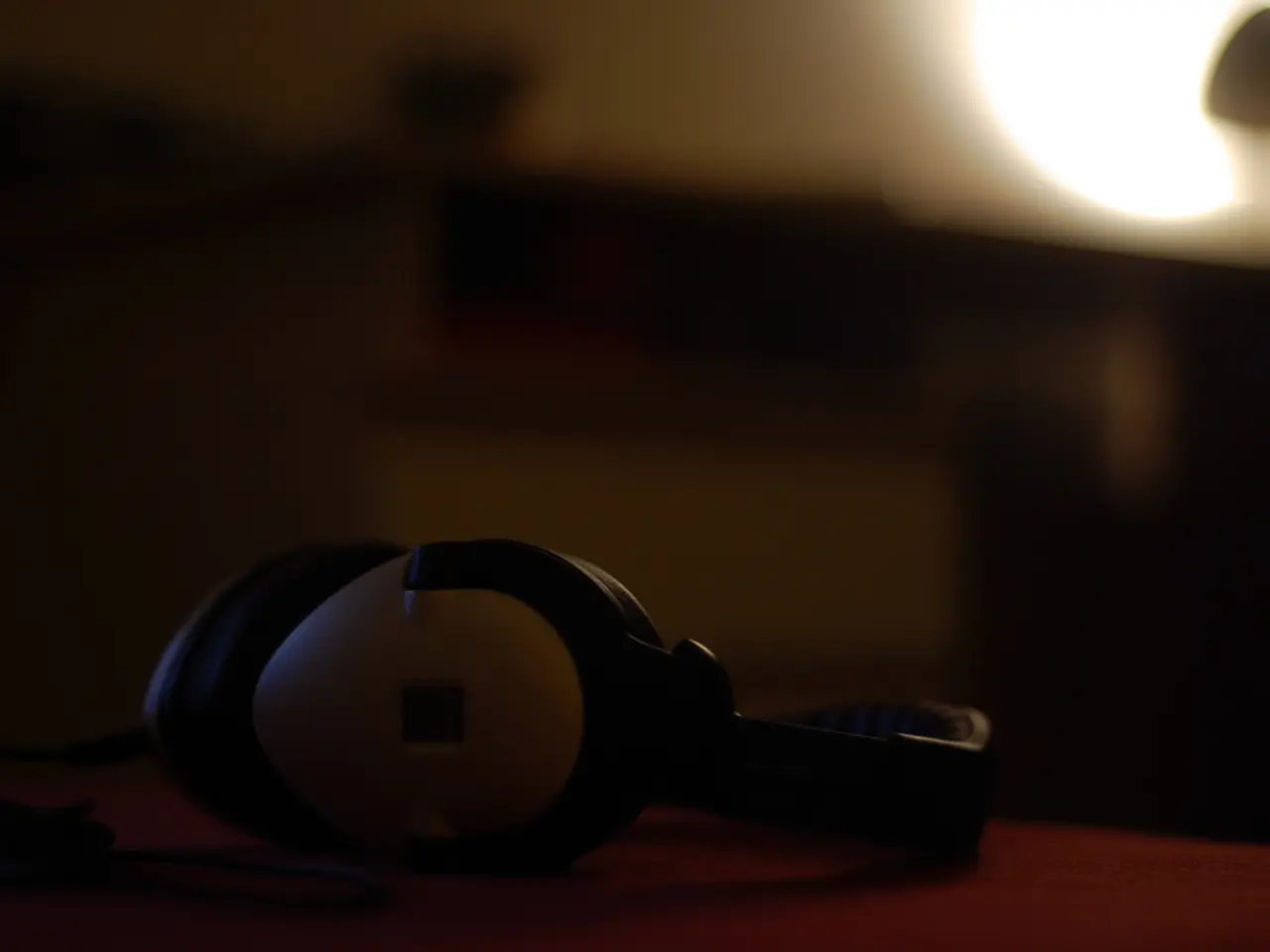Potential Harm to Hearing from Regular Headphone Use?
In the year 1998, during a clinical rotation in Boston, audiologist Brian Fligor encountered a 15-year-old boy with hearing loss. A closer inspection revealed that the boy's right ear was filled with a massive plug of earwax, while his left ear showed signs of hearing loss consistent with long-term noise exposure [1]. This encounter sparked Fligor's interest in understanding the safe volume levels for headphones.
His subsequent study, published in 2004, gained significant attention due to the increasing use of music players like the iPod. The research found that about a quarter of young people, 24%, are listening to personal listening devices at a risky level, and about half, or 48%, were regularly attending loud entertainment venues [2].
The concept of sound dosage significantly affects the risk of hearing loss from using headphones. This term combines both intensity (volume in decibels) and duration of exposure, meaning that prolonged listening at high volumes increases the cumulative noise dose and the risk of noise-induced hearing loss (NIHL).
Damage to hearing can occur with prolonged exposure to noise levels around 80 dB for 6-8 hours, but exposure to louder sounds (above 85 dB) for shorter times can also cause harm. For example, listening at very high volumes typical of some headphones can lead to NIHL if done for too long [3]. Audiologists reference workplace safety standards (like those from OSHA) that set limits on daily noise exposure to prevent hearing loss. Many headphones can reach volumes that exceed these safe levels if used at high volume for extended periods, leading to an excessive sound dose that damages the delicate hair cells in the inner ear permanently [4].
Streaming music has changed the risk associated with headphone use, as it reduces the variation of volume levels in any given track. However, the exposures can still be high due to longer listening periods.
Today, there are growing efforts by public health experts, alongside industry, to develop new tools to help consumers track the "sound dose" they're getting through their headphones on a daily basis. Upcoming safety features based on WHO standards should be dropping from major manufacturers soon, including notifications on smartphones about the total noise dose for the day [5].
The World Health Organization has also released international standards for audio device manufacturers to standardize safe listening. These standards include volume control systems that are more easily accessible, parental control systems, and a headphone safety mode that reduces the volume once you start hitting the danger zone. The WHO has also released new standards for gaming that include similar measures [6].
It's essential to remember that the inner ear requires a lot of oxygen and energy to function, but its blood flow is not sufficient to maintain good hearing over a lifetime. The waste product produced by the inner ear needs to be cleared out to prevent damage to the sensitive, specialized hair cells necessary for effective hearing [7].
In 2022, a group of researchers working with the World Health Organization released a study looking at potential hearing loss among young people worldwide due to loud concerts, events, and headphone use [8]. The study estimated that over 1 billion individuals could be at risk for hearing loss from loud sound exposure.
In summary, sound dosage means that both how loud and how long you listen matter: even moderate volumes can be harmful if exposure is long enough, and very loud volumes can cause damage quickly. Users should be cautious about volume settings and listening duration to reduce the risk of hearing loss from headphone use [1][4].
- Incorporating sound dosage principles in health-and-wellness routines can benefit mental-health and overall wellbeing by reducing the risk of noise-induced hearing loss.
- Science is currently focusing on the development of sound dosage monitoring tools to help users maintain safe listening levels, particularly in relation to the use of personal listening devices like headphones.




